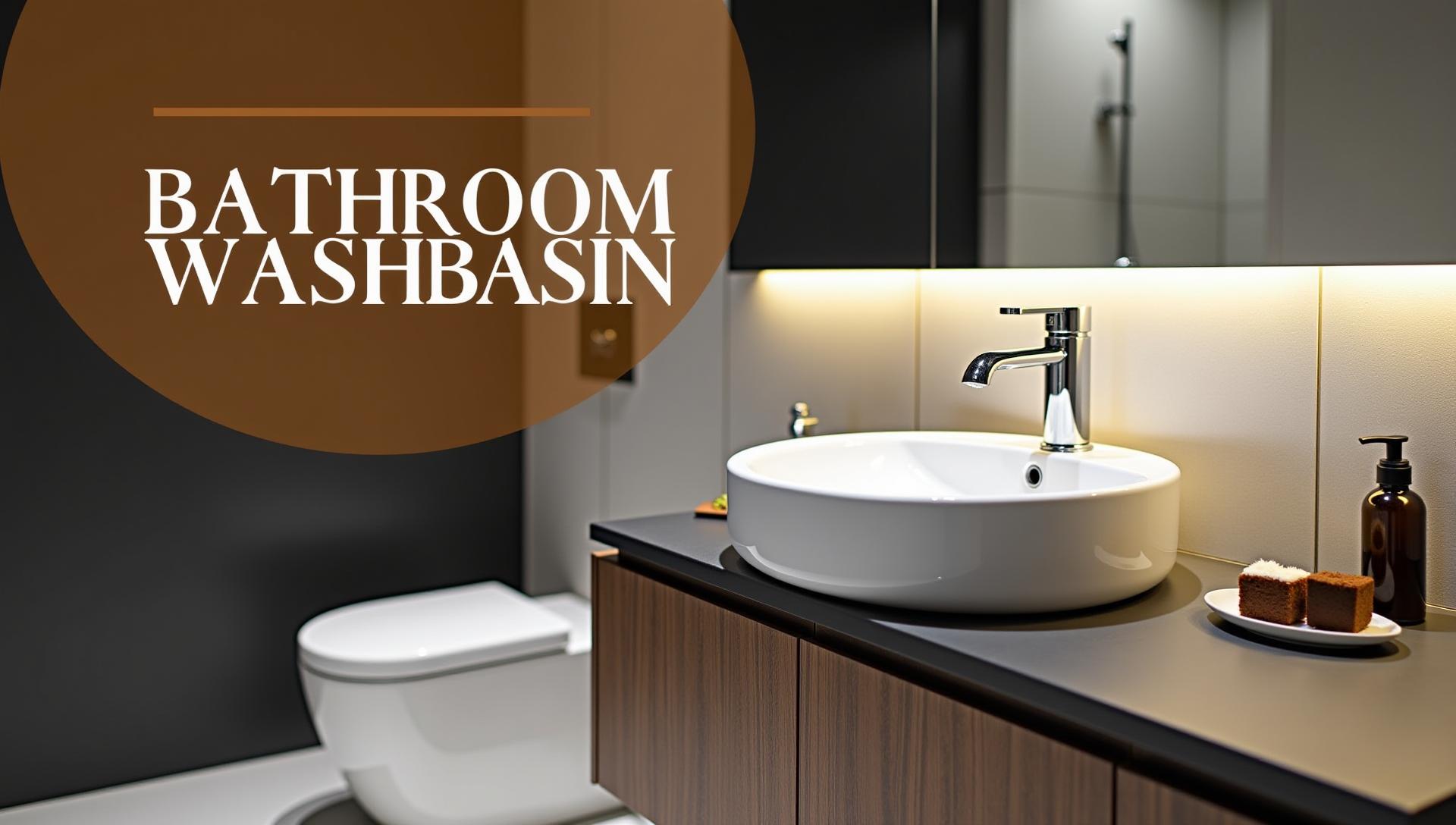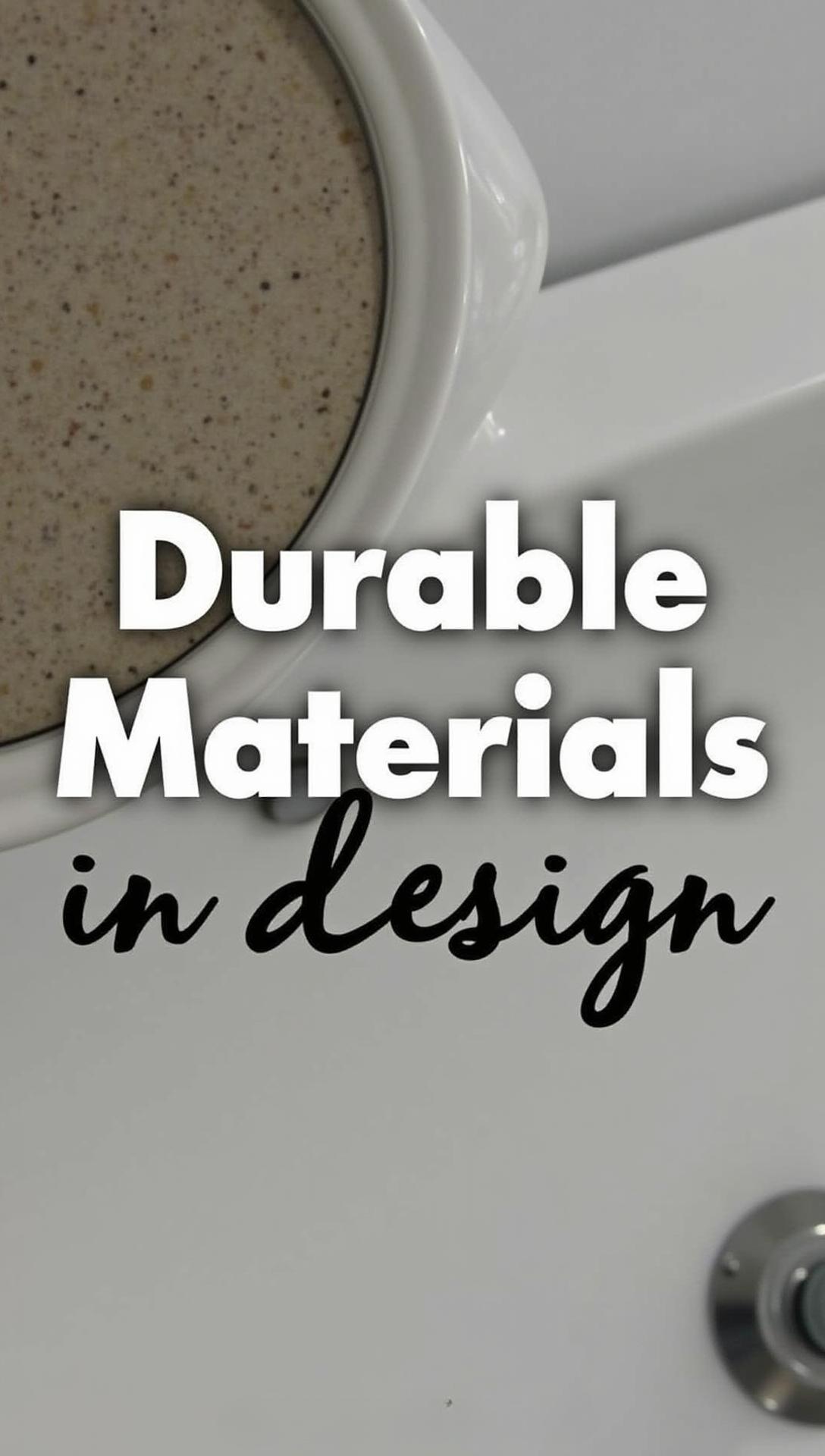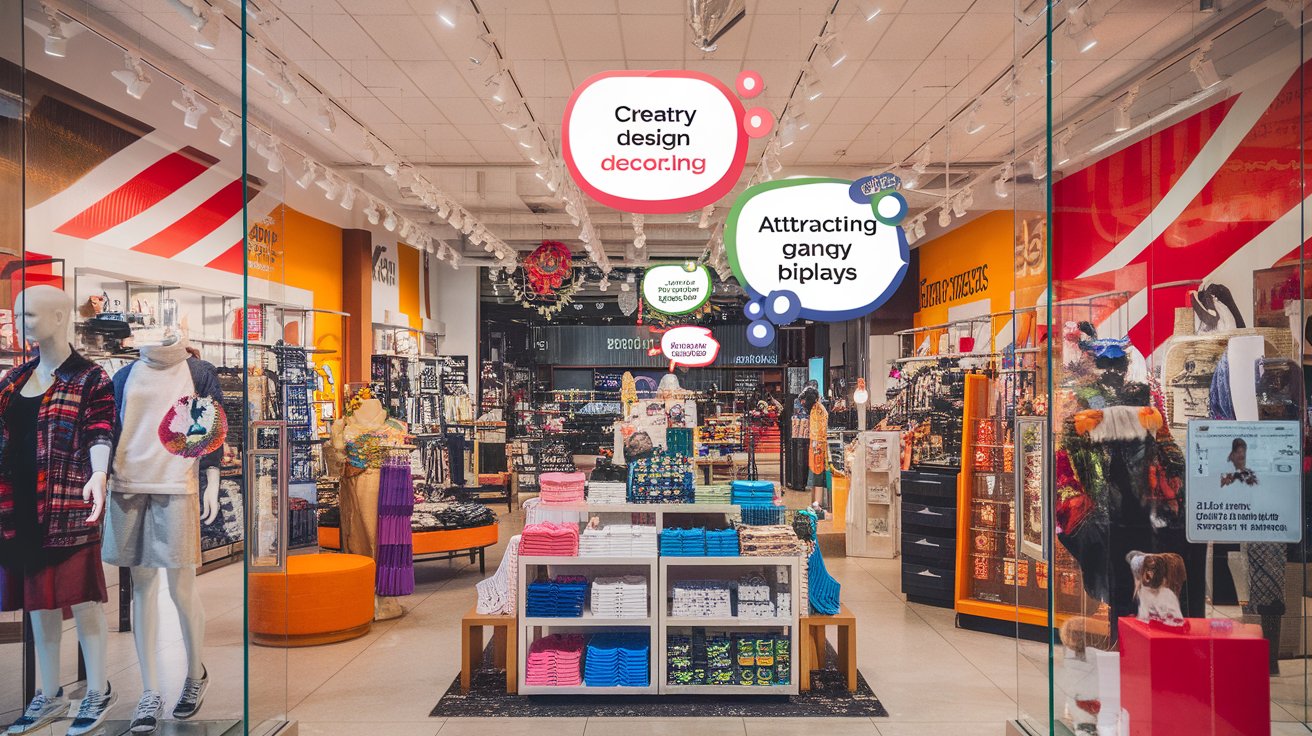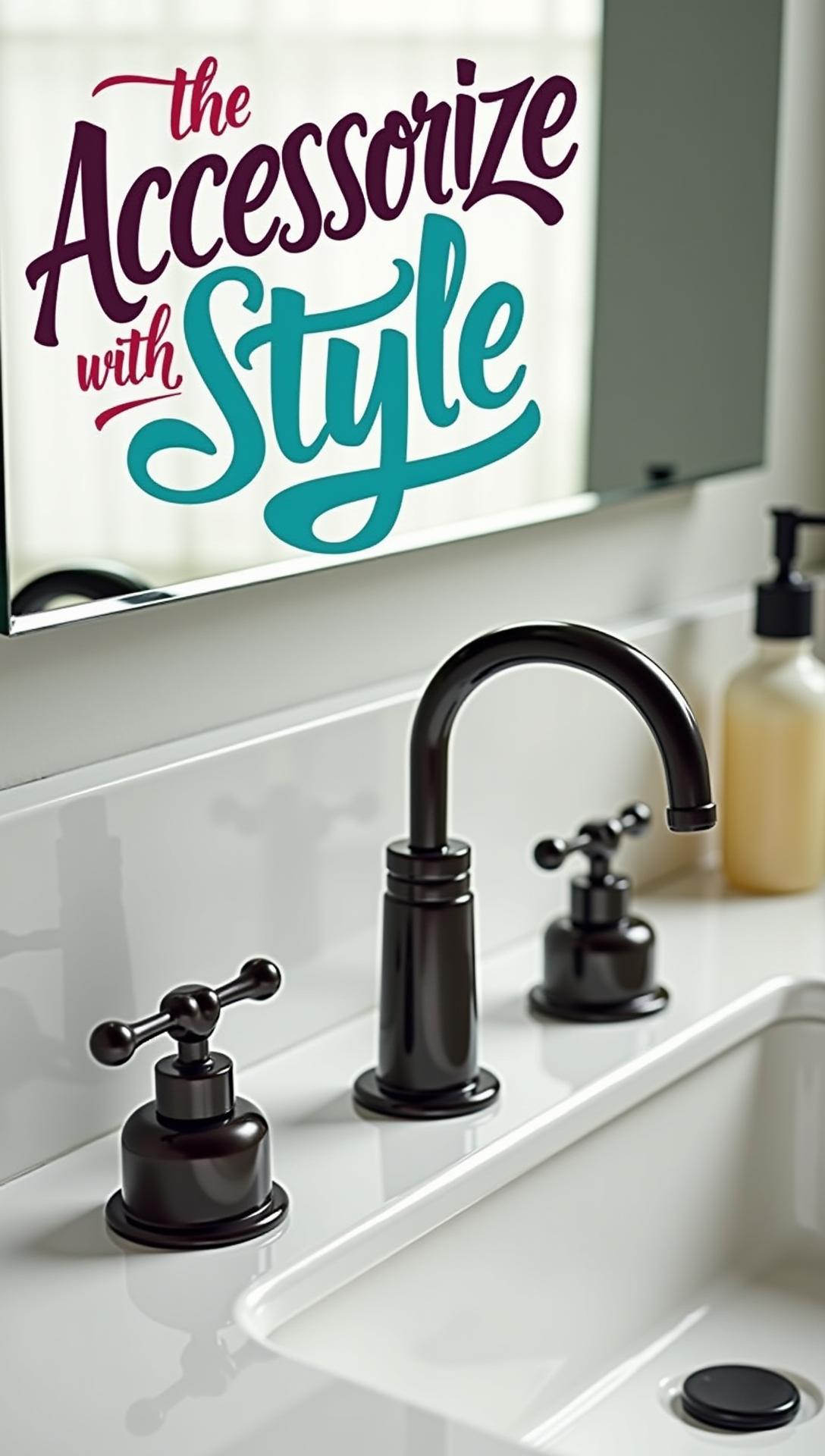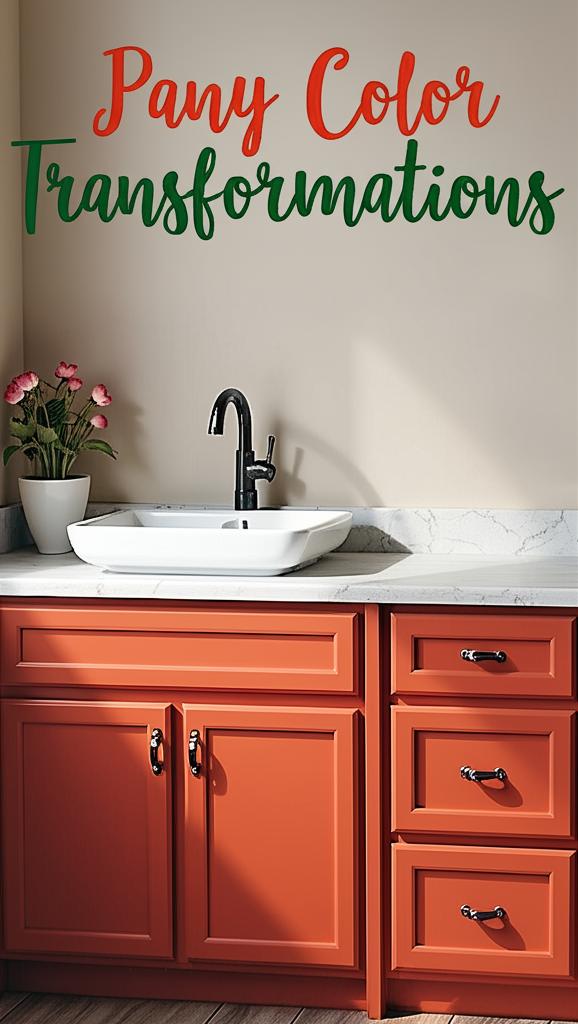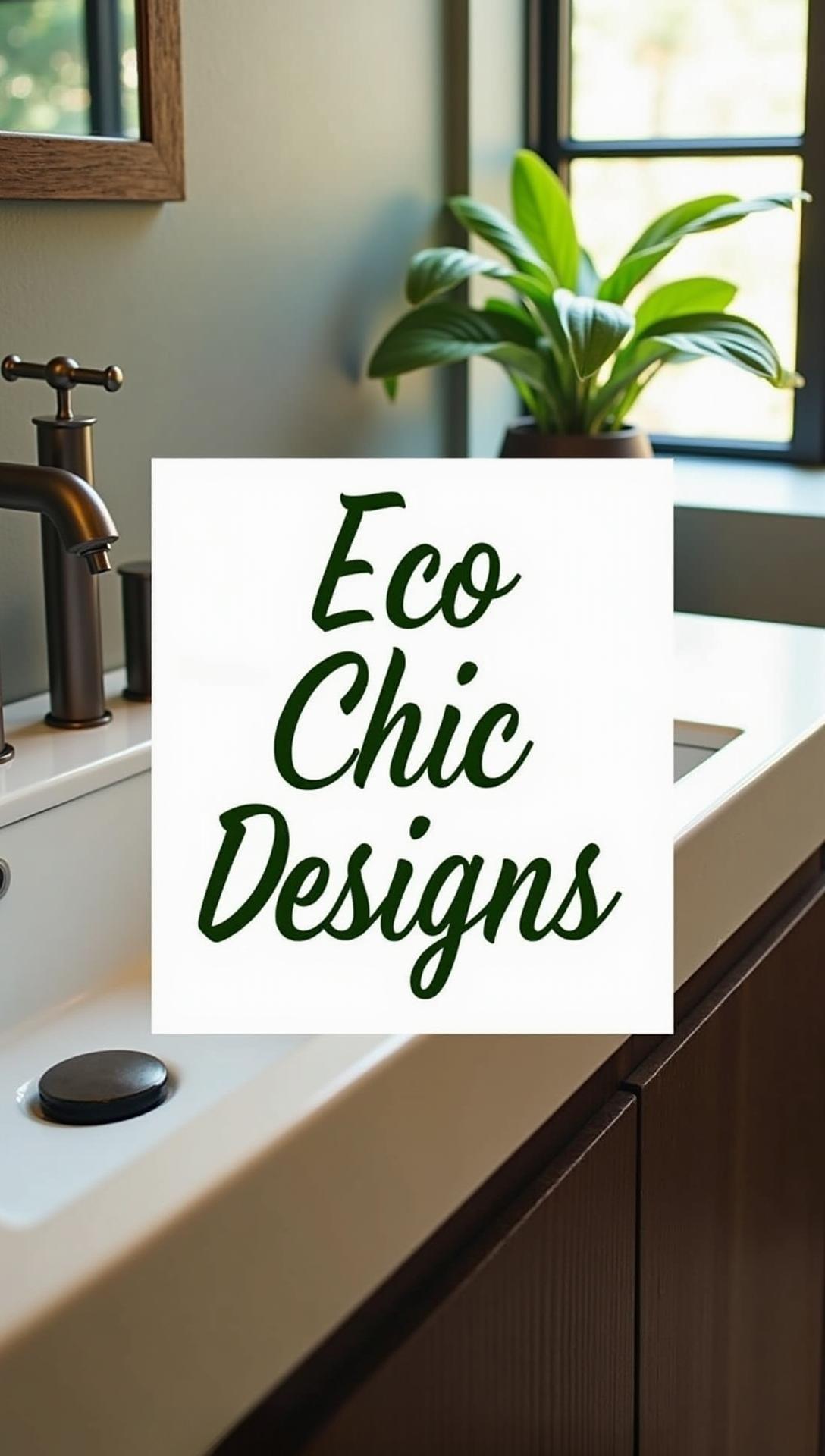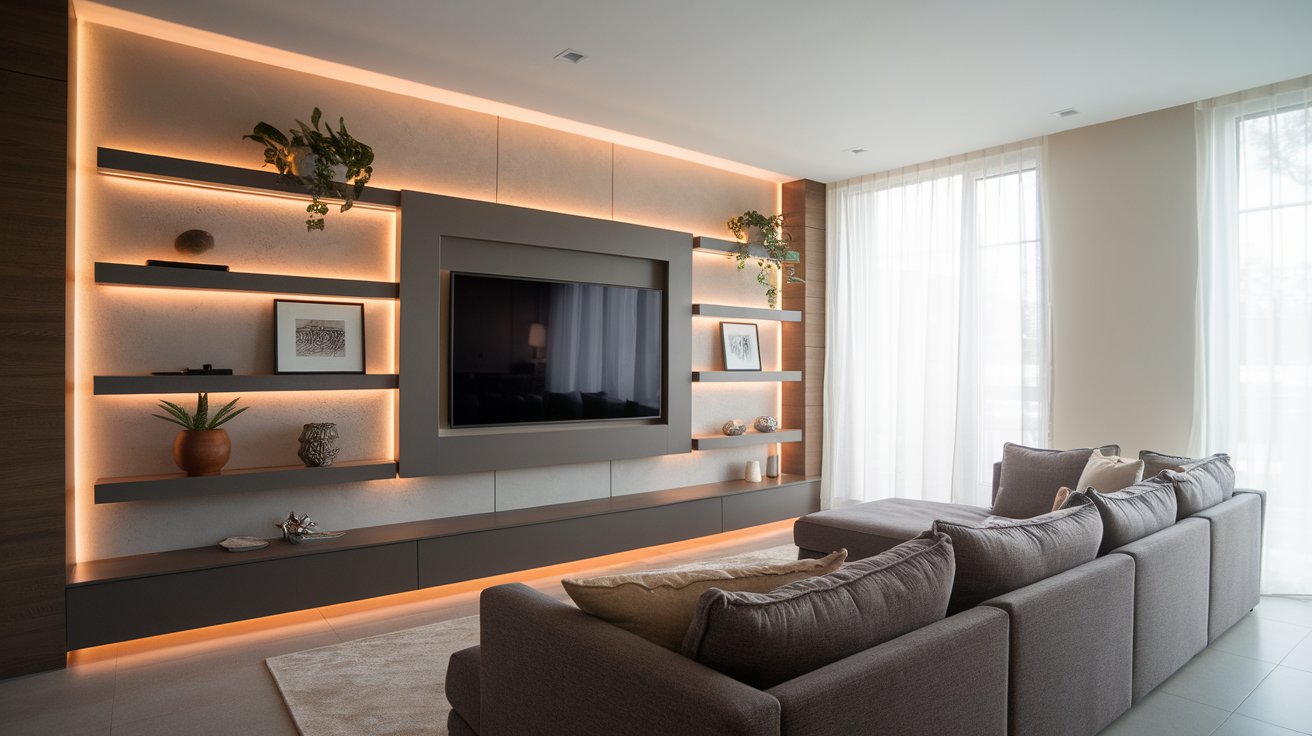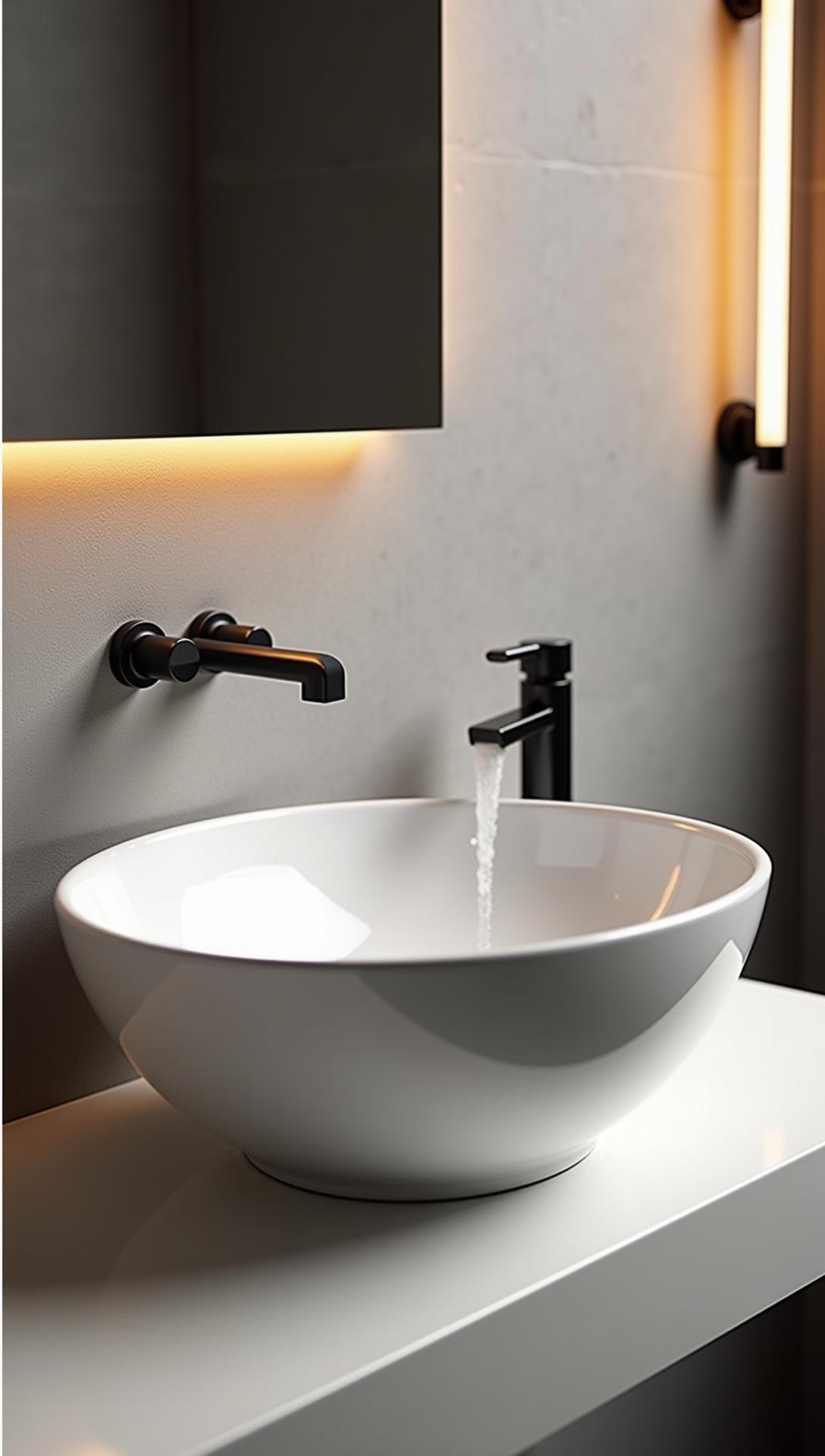Introduction
The washbasin, often overlooked, is a central element in bathroom design that can significantly impact both functionality and aesthetics. With numerous styles and materials available, the right washbasin can enhance the overall décor of your bathroom while providing a practical solution for daily needs. From luxurious marble countertops to minimalist ceramic designs, selecting a washbasin entails considering various aspects such as size, material, and the latest trends in design. Understanding these elements will empower homeowners to make informed decisions when upgrading their bathrooms.
This article explores diverse washbasin design ideas aimed at creating a sleek upgrade to your existing bathroom. Beyond just choosing a basin that looks good, incorporating modern design principles—including sustainability and space efficiency—helps ensure that the new washbasin complements the overall bathroom layout. We will cover everything from classic designs to innovative, contemporary solutions that prioritize both style and utility.
Understanding Washbasin Styles: A Journey Through Time and Design
Historical Context and Evolution of Washbasins
The evolution of washbasins is a fascinating reflection of changing aesthetics and functional needs in bathroom design. Historically, washbasins can be traced back to early civilizations, where simple bowls made of clay or stone were utilized for hygiene. As societies advanced, so did the artistry and designs of these fixtures. The Renaissance marked a significant period of innovation, with lavishly designed basins often made from marble and featuring intricate carvings, enhancing their visual appeal while serving a practical purpose.
During the Victorian era, washbasins became symbols of affluence, and their designs began to incorporate ornate fixtures and ceramics. This period saw the introduction of the pedestal sink, a style characterized by its standalone design, which added grandeur to bathrooms. In the 20th century, functionality emerged as a priority, leading to more minimalist and streamlined designs, reflecting the modernist movement’s ideals. Contemporary washbasins now come in various forms, from wall-mounted units to artistic sculptural pieces, each representing a blend of style and function.
Choosing the Right Style for Your Bathroom Theme
Selecting the appropriate washbasin style is crucial as it greatly influences the bathroom’s overall ambiance. A rustic farmhouse bathroom may benefit from a vintage-style basin, complete with a distressed finish and wooden accents. Conversely, a sleek, modern bathroom would likely be enhanced by a vessel sink with clean lines and a polished surface. The harmony between the washbasin and other elements in the bathroom, such as the cabinetry, tiles, and lighting, is vital for achieving a cohesive look.
- *Traditional Styles*: Often feature intricate details and vintage finishes, ideal for classic-themed bathrooms.
- *Modern Styles*: Focus on minimalism and functionality, perfect for contemporary spaces.
- *Eclectic Styles*: Combine various design elements, allowing for personal expression and creativity.
- *Sculptural Designs*: Artistic washbasins serve as focal points, elevating the aesthetics of a bathroom.
The washbasin should not only meet practical needs but also act as a design statement that resonates with the homeowner’s style. By considering historical influences, current trends, and the overall theme of the bathroom, one can select a washbasin that becomes an integral piece of a beautifully designed space.
Materials for Washbasins: Evaluating Durability, Maintenance, and Design Versatility
The choice of materials for washbasins is paramount in determining not only their aesthetic appeal but also their functionality and longevity. Various materials can be employed in washbasin manufacturing, each presenting distinct characteristics in terms of durability, maintenance needs, and versatility in design.
Common Washbasin Materials and Their Attributes
Porcelain is one of the most widely used materials for washbasins. Known for its smooth surface and high durability, porcelain resists stains and is easy to clean, making it an appealing option for busy bathrooms. Its classic white finish fits seamlessly into a variety of design themes, from traditional to contemporary. However, while porcelain is indeed sturdy, it can be prone to chipping if subjected to heavy impacts.
Natural stone, including granite and marble, elevates any bathroom with its luxurious appearance. Each piece is unique, creating a bespoke element in design. Although stone basins are exceptionally durable, they require more maintenance due to the need for sealing to prevent staining or water damage. This material also has an environmental impact, particularly when sourcing and transporting stone from quarries, which can add a carbon footprint.
Glass washbasins have gained popularity for their modern and elegant appearance. They can vary from thick, solid designs to delicate, artistic shapes, allowing homeowners to express their style. However, glass is susceptible to scratching and may require careful maintenance to keep it looking pristine. The manufacturing process of glass can also have environmental implications, particularly if not sourced from recycled materials.
Stainless steel is a practical choice, offering excellent durability and resistance to stains and corrosion. Commonly found in commercial settings, stainless steel can also fit well in minimalist residential designs. Its easy-to-clean surface makes it a favorite among those seeking low-maintenance options. However, the production of stainless steel involves significant energy consumption and raw material extraction, raising concerns regarding its environmental footprint.
Composite materials provide a versatile alternative that combines aesthetics with functionality. These can mimic the look of natural stone while being more lightweight and easier to install. Their resilience to scratches and stains adds to their popularity; however, the environmental impact of composites can vary depending on their specific makeup and manufacturing process.
Choosing the right material for a washbasin comes down to balancing aesthetics, maintenance, and environmental considerations. Each material offers unique advantages and challenges, ultimately contributing to the overall bathroom experience.
Space-Saving Washbasin Designs: Innovative Solutions for Compact Bathrooms
In modern home design, optimizing space without compromising on style is a primary goal, particularly in smaller bathrooms. Space-saving washbasin designs integrate functionality with aesthetics, offering a range of solutions that cater to compact areas. Whether you’re renovating a tiny en-suite or updating a family bathroom, innovative washbasin concepts can provide impressive results.
Multi-Functional Features to Maximize Space
When considering space-saving washbasin designs, multi-functional features emerge as crucial elements. Floating basins are among the most popular selections for small spaces, providing a sleek appearance while creating an illusion of more floor space. This minimalist approach not only enhances the visual appeal but also leaves room below for additional storage options, such as stylish baskets or decorative bins.
Another compelling design is the corner washbasin, which cleverly utilizes often-overlooked corners of a bathroom. Available in various shapes and sizes, corner basins can fit snugly into tight areas, transforming them into practical spaces for daily use. Some models come with integrated shelving or cabinets, providing necessary storage without encroaching on floor space.
Innovative Materials and Shapes
Creativity in materials and shapes has led to the emergence of compact washbasins that blend style with functionality. Durable materials like stone composite or ceramic allow for sleek designs that can be molded into unique forms, such as oval or asymmetrical shapes. These designs not only save space but also serve as focal points, establishing an artistic flair in the bathroom.
Another striking concept is the use of washbasin vanities, which combine a basin with an underneath cabinet to provide ample storage without overwhelming the visual landscape. Many of these units include dual-purpose features, such as an integrated countertop space for toiletries. The clever arrangement maintains a streamlined look while offering practicality, making them ideal for smaller bathrooms.
Modular basins that can be customized based on individual preferences resonate well in smaller settings. These systems often include interchangeable components, allowing homeowners to adapt their washbasin setup as needs change. This ensures that each element remains functional and stylish as the bathroom evolves.
The trend toward space-saving washbasin designs signifies a shift towards innovative solutions that prioritize functionality and style in compact bathrooms, ultimately enhancing the overall bathroom experience.
Stylish Basin Accessories: Enhancing Washbasin Appeal and Functionality
The bathroom serves as a sanctuary for relaxation and rejuvenation. A thoughtfully designed washbasin not only enhances the aesthetic of the space but also elevates its functionality. The right accessories can transform a basic washbasin into a centerpiece, reflecting personal style while serving practical needs.
Elevating Functionality with Innovative Faucets
The faucet is one of the most prominent features of a washbasin. The selection of a faucet can dramatically influence the overall look and feel of the bathroom. Contemporary designs, such as wall-mounted faucets or sleek, minimalist styles, can create a sense of space and modernity. Touchless faucets offer a hygienic solution, reducing the spread of germs while adding an element of tech-savvy sophistication. Additionally, consider the finish—chrome and brushed nickel are popular, but matte black or antique brass can provide a striking contrast against lighter washbasin materials and colors.
Chic Soap Dispensers: Function Meets Fashion
A stylish soap dispenser is an understated yet impactful accessory that can complement the washbasin. Opt for designs that resonate with the overall theme of your bathroom—ceramic or glass dispensers can add a touch of elegance, while sleek stainless steel options can support a contemporary look. Eco-friendly choices, such as refillable dispensers, not only promote sustainability but can also become a conversation starter when styled creatively.
Mirrors: The Multifunctional Essential
No washbasin area is complete without an appropriate mirror. Beyond merely serving the practical purpose of reflection, mirrors can enlarge the perception of space while adding depth to the overall design. Frameless mirrors can enhance a clean, modern ambiance, while ornate frames can introduce character and charm to the room. Backlit mirrors provide functionality during evening routines while contributing to a spa-like atmosphere.
Incorporating these accessories into your washbasin design enhances both aesthetic appeal and functionality, allowing you to create a cohesive look that reflects your personal style. Thoughtful details such as faucets, soap dispensers, and mirrors provide opportunities to elevate your bathroom experience. Dining in to the nuances of these elements paves the way for an evolved washing area, effortlessly blending utility with chic design while setting a sophisticated tone for modern bathrooms.
Color Psychology in Bathroom Design: The Impact of Color on Washbasin Aesthetics
Color has a profound effect on our psychology, influencing emotions and perceptions, which makes it a crucial aspect of washbasin design in the bathroom environment. Selecting the right color can transform your space, shaping the ambiance and influencing how users feel during their daily routines. Washbasins are often the focal point of the bathroom; thus, their color can set the tone for the entire space.
Understanding the Psychological Effects of Color
Different colors evoke different feelings and responses. For example, blues tend to create a sense of calm, while greens echo renewal and freshness. On the other end of the spectrum, reds and oranges are energizing and can ignite excitement. By consciously choosing colors for your washbasin, you can enhance the mood of the bathroom to suit your personal needs or preferences.
- Serene Blue: This soothing hue resonates well in a spa-like bathroom. A pale blue washbasin can evoke tranquility, making it perfect for relaxation after a long day.
- Calming Green: Shades of green can create a refreshing atmosphere. An earthy green basin might reflect nature, providing a sense of rejuvenation.
- Elegant White: Classic and timeless, white washbasins create an illusion of space and cleanliness. This neutral color can enhance the feeling of brightness in smaller bathrooms.
- Bold Black: A black washbasin can provide a sleek, modern touch, ideal for a contemporary bathroom aesthetic. It can also create a dramatic contrast when paired with lighter elements.
- Warm Terracotta: Earthy tones like terracotta or warm beige can introduce a cozy ambiance, making the bathroom feel inviting and grounded.
Color Scheme Ideas for Bathrooms
When selecting a color scheme, consider how the washbasin’s color interacts with other bathroom elements, such as tiles, paint, and fixtures. A cohesive palette will enhance overall design unity. Here are a few color scheme ideas:
- Soft Shades: Pair a pastel washbasin with white walls and light wood accents for a serene, harmonious look.
- Contrasting Tones: Combine a dark washbasin with bright, contrasting colors like white or light grey walls to create a modern edge.
- Monochromatic Palette: Use different shades of the same color family for the washbasin, walls, and decor to achieve a sophisticated, layered effect.
By thoughtfully incorporating color in washbasin design, you can create a bathroom space that not only looks beautiful but also promotes a desired mood and provides a functional experience.
Integrating Sustainability into Washbasin Design
As we continue to seek ways to enhance our living spaces, the bathroom stands as a prime candidate for a sustainable makeover. The washbasin, often one of the most used features in a bathroom, plays a pivotal role in this transformation. A seamless blend of aesthetics and eco-consciousness can not only elevate the appearance of your bathroom but also contribute to a healthier planet.
Eco-Friendly Materials for Contemporary Washbowl Designs
When considering sustainable practices in washbasin design, the choice of materials is paramount. Opting for eco-friendly options such as reclaimed wood, bamboo, or recycled glass can significantly reduce environmental impact. For instance, bamboo is a renewable resource that grows quickly and requires minimal water, making it an excellent choice for cabinetry and washbasins alike. Recycled glass, on the other hand, not only minimizes waste but also offers a chic, contemporary look that can seamlessly fit into any design scheme.
Ceramics treated with eco-conscious glazes can enhance durability without compromising on style. These glazes are often devoid of harmful chemicals, ensuring a safer environment for both users and the planet.
Energy-Efficient Faucets for Water Conservation
Implementing water-saving technologies in faucets can also revolutionize the efficiency of your washbasin. Modern low-flow faucets are designed to deliver adequate water pressure while reducing the overall consumption. These efficient fixtures can save up to 60% more water compared to standard faucets, aligning sustainability with practicality.
Alongside low-flow options, touchless faucets and motion sensor models can enhance hygiene while further promoting water conservation. These innovations not only provide a sleek look but offer the convenience of hands-free operation, helping to minimize wastage that occurs when water runs unnecessarily while washing hands.
Integrating sustainability into washbasin design transcends mere aesthetics; it embodies a lifestyle choice that prioritizes environmental health. By selecting eco-friendly materials and energy-efficient faucets, you can create a harmonious balance between beauty and responsibility in your bathroom space. This thoughtful approach not only enhances your personal sanctuary but contributes to a broader movement towards sustainable living.
Finalizing the Look: Sleek Washbasin Selection for Your Bathroom Upgrade
Choosing the Right Washbasin
Choosing the perfect washbasin is pivotal in achieving a sleek bathroom upgrade. Among various styles available, the key is to select a design that aligns with your vision for the overall space. Whether you prefer a contemporary countertop, an under-mount basin, or a wall-mounted option, each type has its own aesthetic appeal. Consider materials such as porcelain, stone, or glass, as they can significantly influence the ambiance of your bathroom. Select finishes that harmonize well with your existing fixtures and accessories.
When you have narrowed down your options, visualize how each prospective basin will interact with your bathroom’s color palette and layout. Keep in mind the scale of the basin in relation to the counter space to avoid overwhelming the area.
Installation and Maintenance Tips
Once you’ve settled on a design, the installation process needs careful consideration. If you are comfortable with DIY tasks, make sure to read the manufacturer’s instructions thoroughly. Ensure that you have all the necessary tools and materials before starting, as this will streamline the process. Hiring a professional may be advisable if plumbing adjustments are required, especially in older homes where existing plumbing may not align with modern setups.
Post-installation, proper maintenance will prolong the life of your washbasin and preserve its sleek appearance. Regular cleaning with non-abrasive materials will help prevent scratches and dullness. For stone surfaces, applying a sealer periodically is essential to protect against stains. Always follow the specific care instructions provided by the manufacturer to maintain the integrity of the basin.
Enhance the aesthetic coherence of your bathroom by ensuring that the washbasin complements other design elements. Coordinating taps, mirrors, and lighting fixtures is vital for creating a unified look. Pay attention to the hardware finishes, including your faucet, which can either contrast for an eye-catching effect or complement for a seamless appearance.
The choice of a washbasin should reflect your personal taste while considering practicality. Take your time to finalize the look, making informed decisions for a bathroom space that not only looks sleek but also functions elegantly.
Conclusions
The design of a washbasin plays an instrumental role in the layout and functionality of a bathroom. A well-chosen basin not only meets practical needs but also adds character and style to the environment. By considering various materials, shapes, and design trends, homeowners can find the perfect washbasin to create a stunning focal point in their bathrooms.
Investing in a stylish and functional washbasin is a key step towards elevating your bathroom’s overall aesthetics and efficiency. Whether you prefer bold statements or subtle elegance, there are countless options available to suit any taste and enhance your daily routines. Let these washbasin design ideas inspire your next bathroom upgrade.

